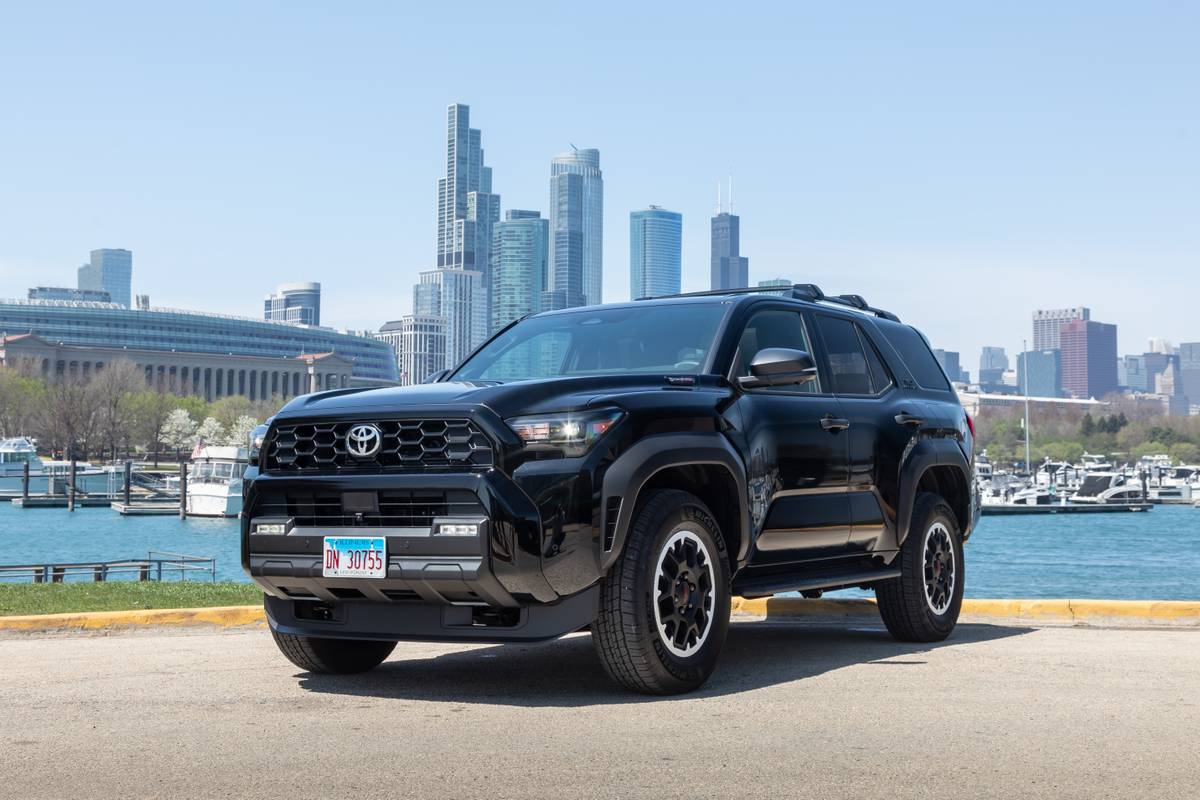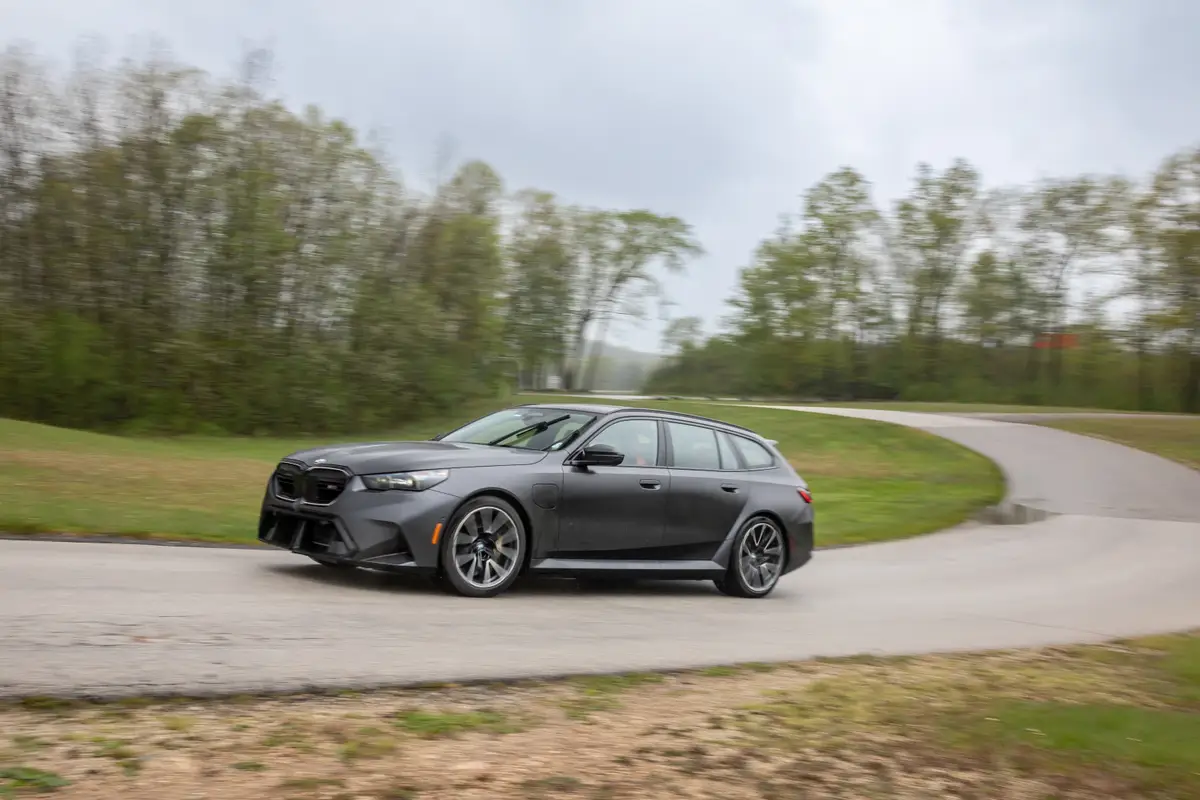2015 Honda CR-V: Car Seat Check

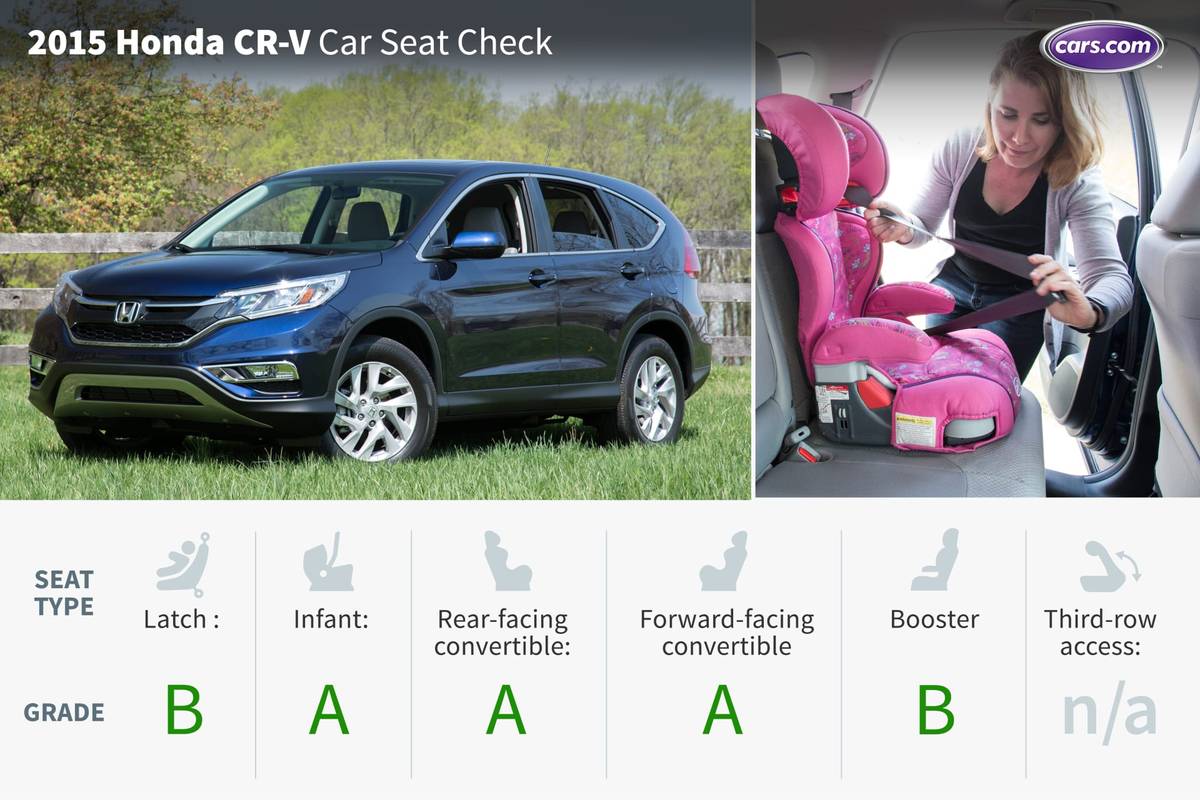
The 2015 Honda CR-V doesn’t seem like a compact SUV when it comes to its backseat. With plenty of rear legroom and hip room, this small SUV could easily be mistaken for a midsize model. Rear passengers will relish all that room, but parents with rear-facing child-safety seats may appreciate it the most.
How many car seats fit in the second row? Two
What We Like
- The CR-V has two sets of lower Latch anchors in the outboard rear seats and an additional anchor in the middle seating position. This extra anchor gives parents the ability to install a car seat in the middle seat with the Latch anchor system. All the lower Latch anchors are easy to access.
- The rear-facing infant and convertible seats fit well in the CR-V. For the infant seat to fit, we had to move the front passenger seat forward one click, but this didn’t have any impact on the tester’s legroom and knee room.
- The forward-facing convertible and the booster seat also fit well in the CR-V’s backseat.
What We Don’t
- The outboard seats’ tether anchors are near the base of the rear seatbacks and well-marked with a Latch icon, but cargo hooks sit nearby, which could confuse parents who aren’t familiar with using tether hooks. The middle position’s tether anchor is in the cargo area’s ceiling, which negatively impacts the driver’s rear visibility when used.
- When in use, the middle seat’s seat belt also comes out of the ceiling, impacting rear visibility.
- While the seat-belt buckles are on stable bases, which we appreciate, they sit nearly flush with the seat bottom cushion. This position can be difficult for young kids in booster seats to use.
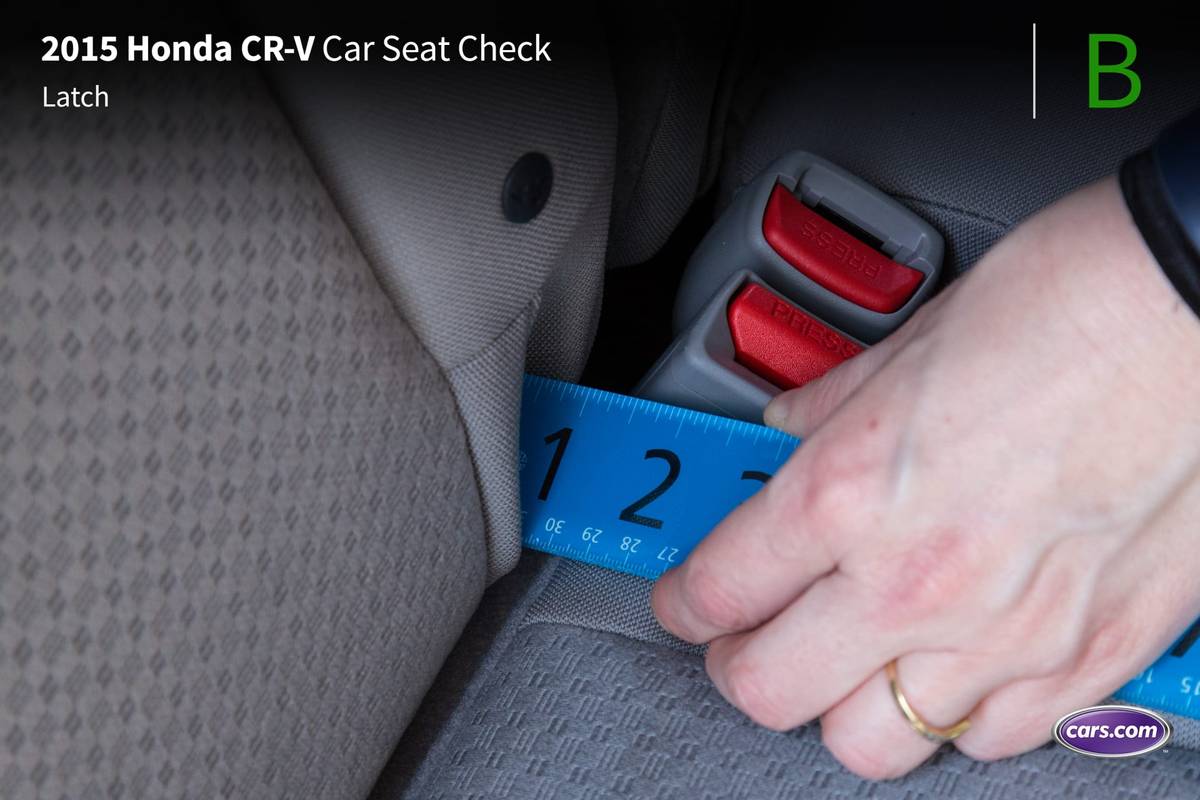
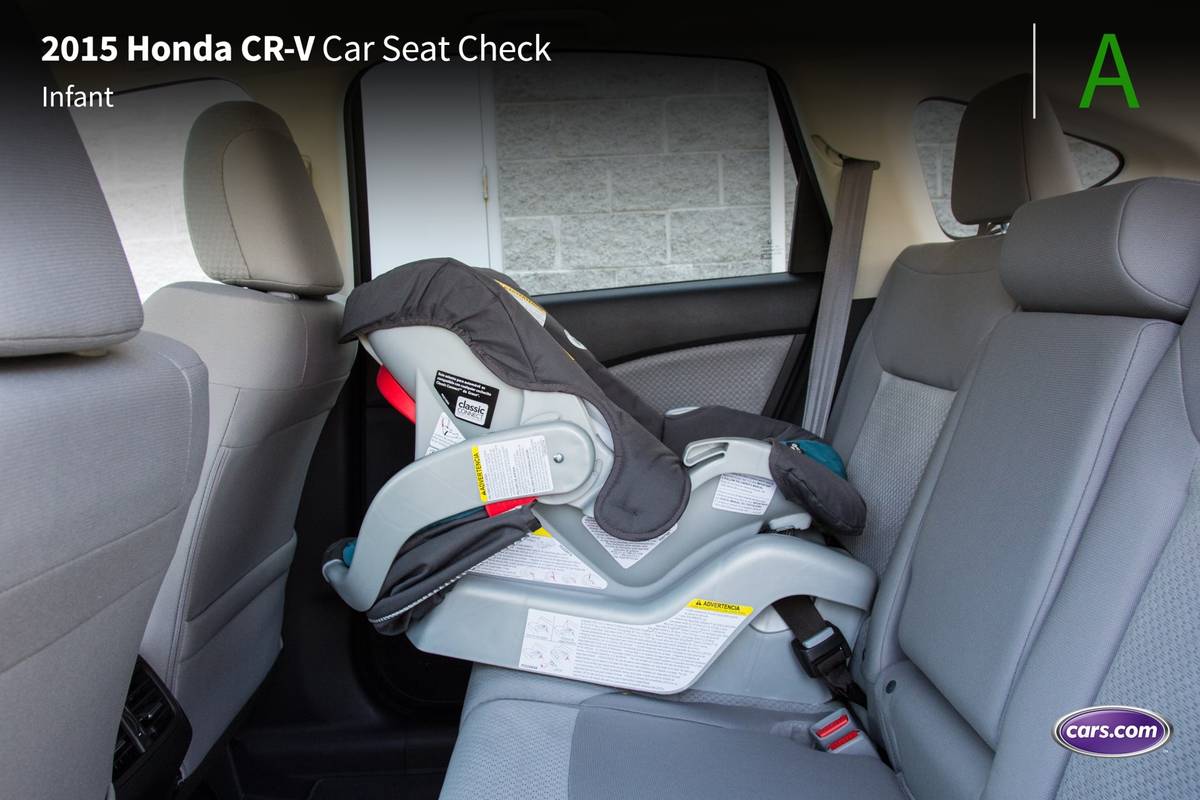

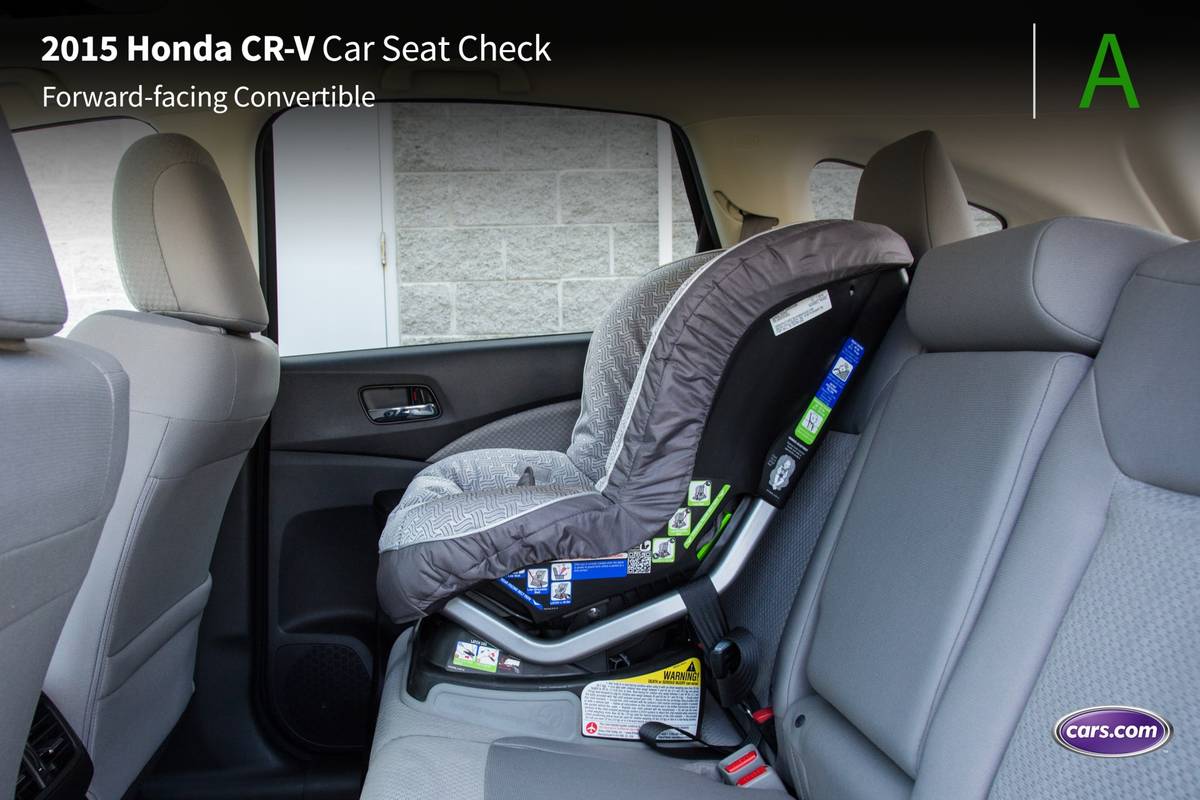
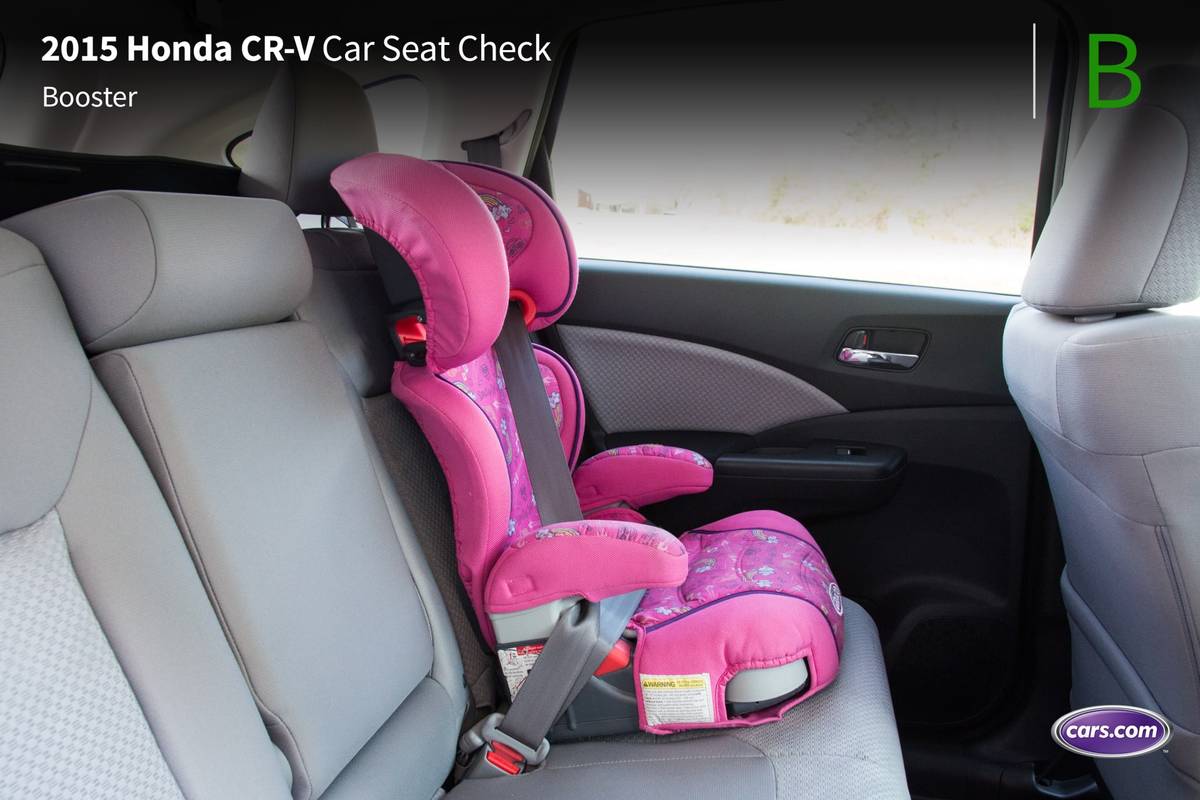





About Cars.com’s Car Seat Checks
Editors Jennifer Geiger and Jennifer Newman are certified child safety seat installation technicians.
For the Car Seat Check, we use a Graco SnugRide Classic Connect 30 infant-safety seat, a Britax Marathon convertible seat and Graco TurboBooster seat. The front seats are adjusted for a 6-foot driver and a 5-foot-8 passenger. The three child seats are installed in the second row. The booster seat sits behind the driver’s seat, and the infant and convertible seats are installed behind the front passenger seat.
We also install the forward-facing convertible in the second row’s middle seat with the booster and infant seat in the outboard seats to see if three car seats will fit; a child sitting in the booster seat must be able to reach the seat belt buckle. If there’s a third row, we install the booster seat and a forward-facing convertible. To learn more about how we conduct our Car Seat Checks, go here.
Parents should also remember that they can use the Latch system or a seat belt to install a car seat, and that Latch anchors have a weight limit of 65 pounds, including the weight of the child and the weight of the seat itself.

Editor-in-Chief Jennifer Newman is a journalist with more than 25 years of experience, including 15 years as an automotive journalist at Cars.com. Jennifer leads the Editorial team in its mission of helping car shoppers find the vehicle that best fits their life. A mom of two, she’s graduated from kids in car seats to teens behind the steering wheel. She’s also a certified car-seat technician with more than 12 years of experience, as well as member of the World Car Jury, Automotive Press Association and Midwest Automotive Media Association. LinkedIn: https://www.linkedin.com/in/jennilnewman/ Instagram: @jennilnewman
Featured stories
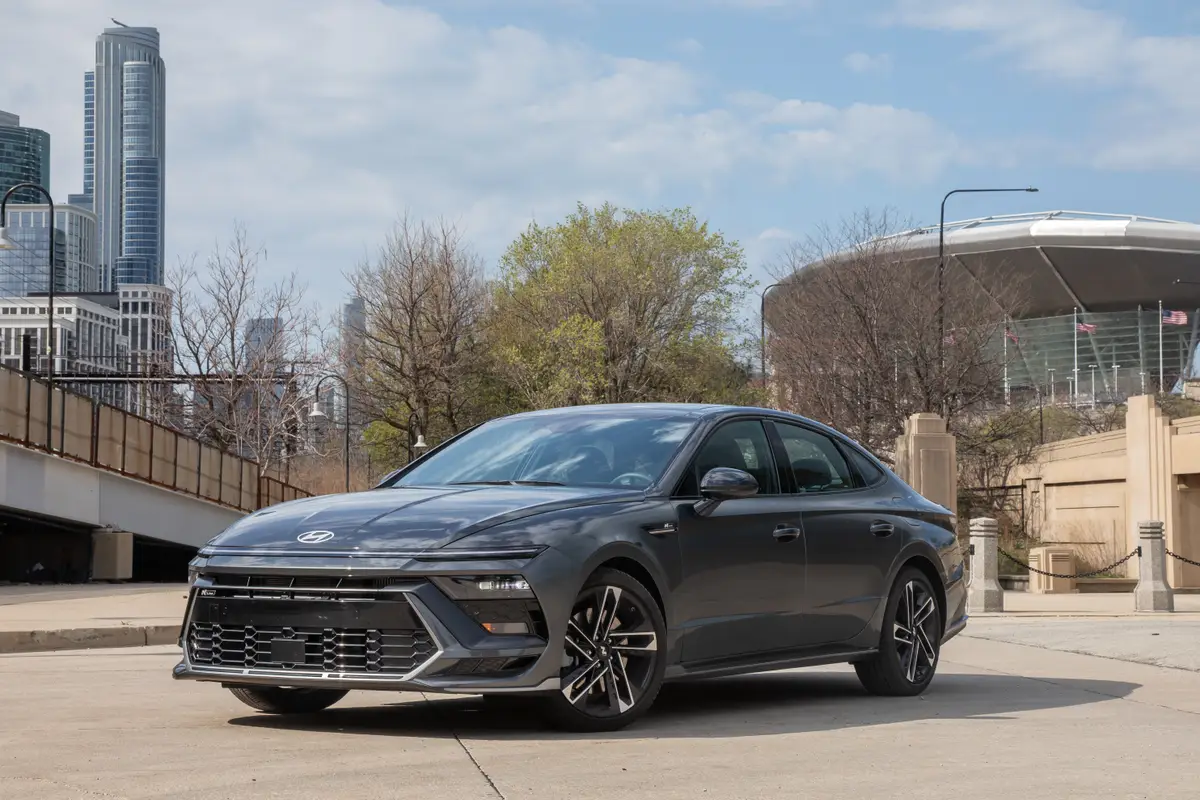
2025 Hyundai Sonata N Line Review: Banish Boring

